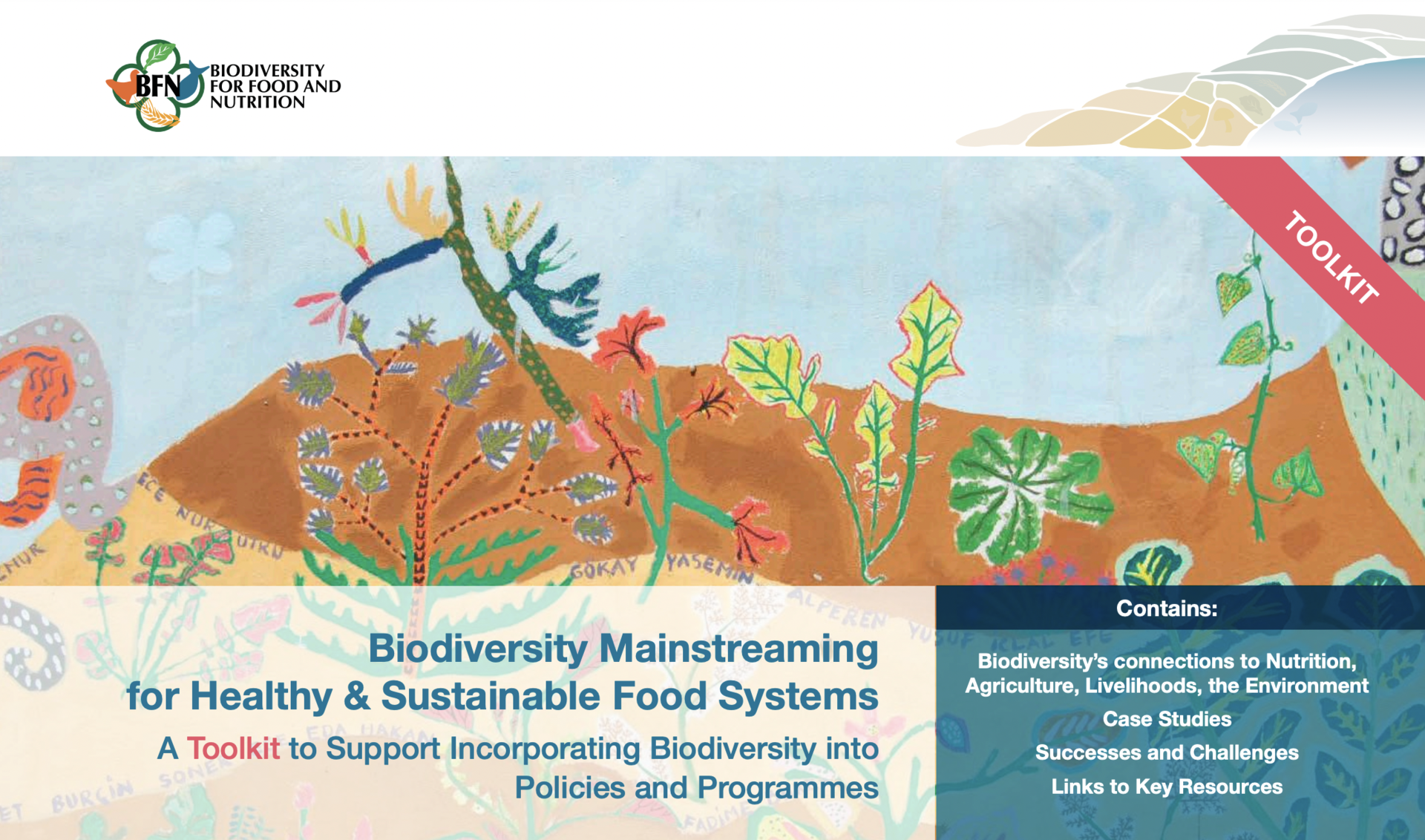Mainstreaming Biodiversity Toolkit

What is it?
This toolkit is an inspiration that brings together field experiences from Brazil, Kenya, Turkey, and Sri Lanka, accrued during the Biodiversity for Food and Nutrition project implementation, along with insights from organizations working on related issues.
Each key aspect of the mainstreaming process is presented as a numbered and color-coded section. Details and challenges faced during project implementation are provided through relevant case studies, “focus on” examples, and resources. The resources can be accessed online by clicking on the thumbnail images accompanying their descriptions.
This multi-level, cross-sectoral content reflects the wide-ranging approach necessary for mainstreaming biodiversity for healthy and sustainable food systems. It is not a prescriptive step-by-step manual. While the recommendations and resources offer a starting point, readers are strongly encouraged to adapt this knowledge to their respective country contexts, as each location may present different opportunities and challenges.
In what context is this tool useful?
This toolkit is useful for researchers, practitioners and policymakers who are seeking to connect their biodiversity to healthy and nutritious diets and to sustainable food systems.
Results achieved
The practices and methods outlined in the mainstream toolkit have been implemented in Brazil, Kenya, Sri Lanka and Turkey to great effect. Example activities and outcomes include:
- Successful adoption of school feeding in Kenya and Brazil
- Green employment initiatives in Turkey
- Consolidation of knowledge on traditional agriculture practice in a comprehensive inventory
- Use of national biodiversity strategy and action plans (NBSAPs) led to US$60 million pledged to protect biodiversity for food and nutrition in Brazil
- Policy in Kenya helped the Biodiversity for Food and Nutrition project to better mainstream indigenous vegetables into school meals by better linking farmer groups to institutional markets. The project activities directly contributed to Kenya’s first Biodiversity Conservation Policy in Busia County (2018).
- Biodiversity for Food and Nutrition uses Alcati Food Festival in Turkey to disseminate information
- In Sri Lanka, Biodiversity for Food and Nutrition supported the Hela Bojun outlets, a group of 18 market outlets that sell freshly prepared local foods and empower rural women.
The Biodiversity for Food and Nutrition project has demonstrated successful and varied applications of these approaches, culminating in the compilation of nutritional data on 195 species, boosting their recognition and use worldwide.
Variations on this method
The biodiversity mainstreaming for food and nutrition methodology has been adapted for the four countries in which it was co-developed. Variations of this kind, or further adaptations are possible and encouraged in other countries.
Brazil – a megadiverse country – the project could integrate with ongoing policy efforts to inventory and understand local plants for nutrition and the Zero Fao initiative, which was already working on school feeding and public procurement (see: School Feeding).
Kenya – a strong decentralization policy in Kenya meant a focus at county level, where stakeholders guided the work to meet their aspirations to add value to local crops, particularly African leafy vegetables as a mechanism for improving school nutrition and boosting local incomes (see: Policy).
Experiences
The Alaçati Herb Festival: promoting traditional foods in Turkey
Why conserving agrobiodiversity matters in Sri Lanka


